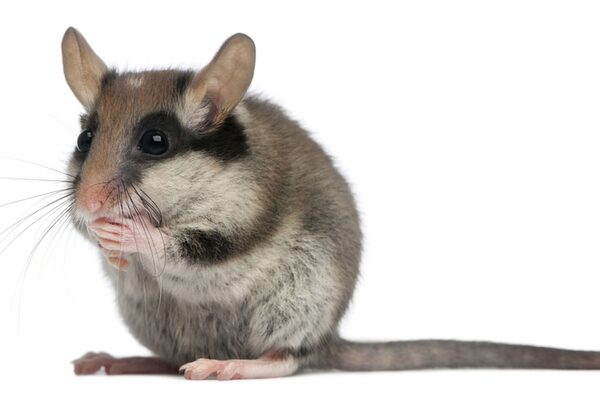Garden sleepers in the Wiesbaden area
Garden dormice - the most conspicuous members of the dormouse family thanks to their dark face mask - are native to Wiesbaden and the surrounding area.
With its large eyes and black face mask, the garden dormouse is the most conspicuous member of the dormouse family, also known as dormice. These small mammals, only ten to 17 centimetres in size, are mainly found in deciduous and coniferous forests, but also inhabit orchards and home gardens. The nocturnal omnivores are dependent on the widest possible range of food. Their diet includes fruit, buds and seeds as well as insects and snails. Until hibernation, which begins in October, they need to build up sufficient reserves to survive until the following April. They build their self-made spherical sleeping nests hidden and protected in tree hollows or rock crevices. Near settlements, they also use bird nesting boxes, shed and house roofs or shutter boxes. Conflicts can therefore arise with these small cultural successors, especially when living together with humans under the same roof.
The garden dormouse is highly endangered
Due to increasing land consumption for housing, traffic and agriculture, the habitat of garden dormice is becoming smaller and increasingly fragmented. Pesticides, especially insecticides and rodenticides (rodent poisons), can lead to direct and indirect damage. Fewer insects mean less food for the animals. Changing climatic conditions also pose new challenges for garden dormice. Increasingly mild winters are causing the animals to wake up from hibernation more frequently. This increases their energy requirements and can easily lead to starvation. In cities, garden dormice are often lucky enough to find a table set for them even in winter - e.g. at bird feeders. The latter in particular explains why the animals appear to be more endangered in the open countryside than in the city.
In Wiesbaden, the small dormice are still frequently sighted. This fact has earned the city the unofficial title of "garden dormouse capital".
Even if the population of this dormouse species in Wiesbaden still appears to be stable at present, there are dangers lurking in urban areas that the animal rarely encounters in the open countryside:
- Domestic cats are not only after birds and other rodents, but also hunt garden dormice,
- Rodenticides not only control rats, but can also be fatal for garden dormice,
- Open barrels for collecting rainwater often lead to death by drowning for rodents if there are no exit aids.
The population of garden dormice has declined sharply in some regions of Germany and Europe, and in some areas they have even become extinct.
In 2020, the garden dormouse was classified as "critically endangered" in the national Red List and is a so-called 'species of concern', as a large part of its range is located in Germany. The Federal Republic is therefore largely responsible for the conservation of this species.
Project "Tracking down garden dormice"
Garden dormice are under special protection
Garden dormice are a protected species. Due to their protected status, it is forbidden to capture the animals, remove them from their habitat or destroy their nesting sites. Measures that do not directly target the animals but make it difficult or unattractive for them to enter buildings (deterrence) are permitted. On the page "Tracking garden dormice" you will find tips to help make houses "garden dormouse-proof".
If an animal has entered a living space, the Lower Nature Conservation Authority will authorize live trapping with a suitable trap. As a rule, the animal must then be released in the immediate vicinity of the house.
Measures that go beyond this can only be approved if the animals cause unreasonable harm or if there are special reasons. Approval can only be granted for measures that can be expected to effectively eliminate the nuisance and not cause the animals more stress than necessary.
The Environmental Agency, Lower Nature Conservation Authority, requires a written application to check whether an individual case is eligible for approval. Please describe why there is a particular impairment and where exactly the animal or animals are located. Please also provide your contact and address details.
Garden dormouse nesting boxes and information material are available from the Umweltladen, Luisenstraße 19.

